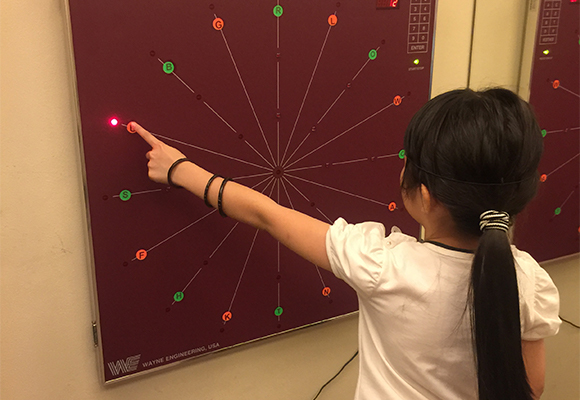All You Need to Know About Short Sightedness
Short-sightedness is most commonly caused by both eyes not working together correctly. Such unsynchronized eyes movement causes strains to the eyes when looking at things up close, such as for reading. Excerpts below are some of the most common questions surrounding short-sightedness amongst children and adults (Yes, short-sightedness can happen to children too)
Frequently Asked Questions
Short-sightedness means that you can see close object clearer than far object. These conditions are more prevalent in senior citizens due to eyeballs development with aging. While senior folks with short-sightedness are more prevalent, we are also seeing a rise of short-sightedness amongst children.
Shortsightedness can be due to a number of different reasons. This happens when the eyeball grows too long. Hence, the light entered doesn't focus on the retina properly but rather focuses in front of the retina, resulting object to appear blurry. The most common reason is that the eyes are working too hard when looking at things up close, such as for reading because the eyes are not working together correctly. If your eyes are not working together correctly when you are reading it can make it difficult to focus on objects or words for long periods of time. Some people have so much difficulty looking up close that they have trouble reading even for a short period of time.
Due to the amount of work children and adults have to perform daily on the computer, smartphones, and tablets, there is actually a shortsightedness epidemic. People are becoming short-sighted faster than ever before. If you are not currently shortsighted, it is best to schedule a Vision Evaluation with our Vision specialist (Neuro-Developmental & Behavioral optometrist), at Sun Time Vision Specialist Centre. The eye examination is to determine if you are at risk of becoming shortsighted. If you are at risk, our Vision specialist, will review with you what you can do to prevent shortsightedness from occurring.
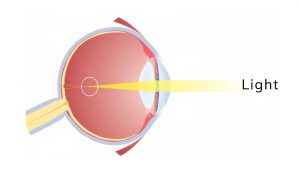
In most cases we are able to reduce the prescription as well as reverse the shortsightedness (Myopia, Rabun Jauh, 近视); however, as mentioned earlier it all depends on what is causing the shortsightedness to get worse. The best thing to do is to schedule a Vision Evaluation (which is different from than usual eye exam ) with a Vision specialist (Neuro-Developmental & Behavioral optometrist), so he can determine the cause of the problem and the best treatment. The good news is that nearsightedness can be help.
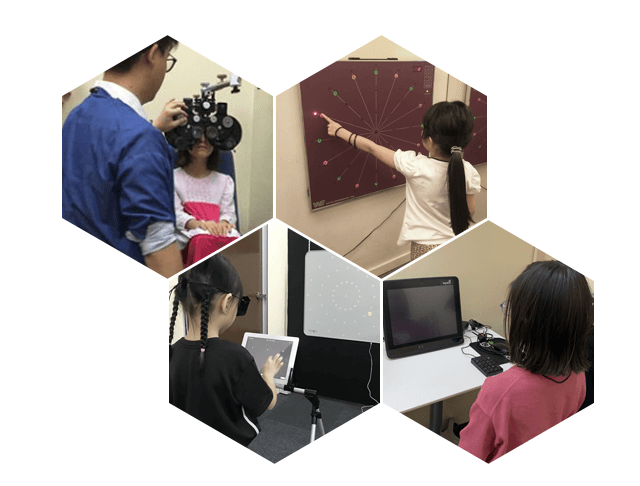
If one is only shortsighted (Rabun Jauh 近视), their eyes will get more shortsighted (Rabun Jauh 近视) gradually over time. But when your eyes don’t work together correctly, or have difficulty changing focus from up close to far away, you will work harder to see up close. This is what makes the shortsightedness (Rabun Jauh近视) get worse too quickly.
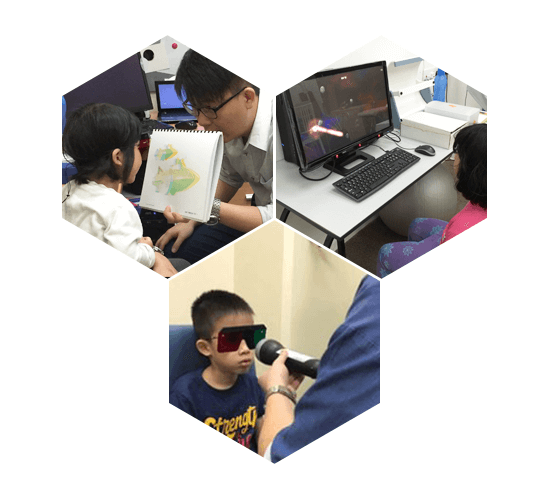
In most cases we are able to reduce the prescription as well as reverse the shortsightedness (Myopia, Rabun Jauh, 近视); however, as mentioned earlier it all depends on what is causing the shortsightedness to get worse. The best thing to do is to schedule a Vision Evaluation (which is different from than usual eye exam ) with a Vision specialist (Neuro-Developmental & Behavioral optometrist), so he can determine the cause of the problem and the best treatment. The good news is that nearsightedness can be help.
To address the reason for the shortsightedness a program of vision therapy is often the best approach. Vision therapy re-trains the eyes, so they don’t have to work so hard when reading or doing other activities such as handwriting and working on the computer.
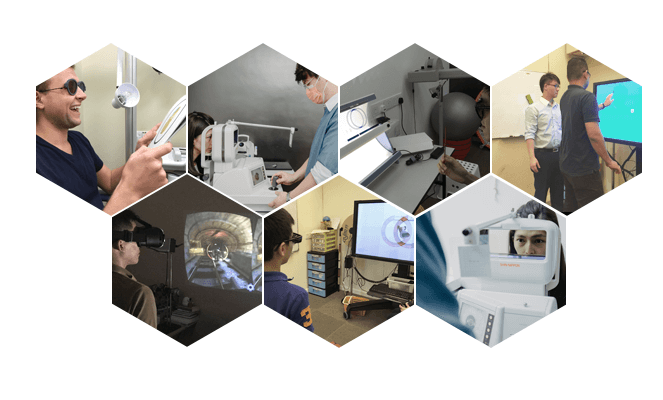
Typically vision therapy requires that you come to the office once a week and do a series of vision therapy activities, in addition to home therapy activities in between sessions. Most children and adults spend a lot of time on close-up activities which make the eyes work harder (or cause the eye muscles to get tight), such as reading, writing, playing computer games, and using an iPad or iPhone. This makes it necessary to relax your eyes daily, which means the home vision therapy must be done every day.
We find that patients with myopia (Shortsightedness, Rabun Jauh, 近视) who practice their eye exercises diligently get faster and better results than patients who do not diligently get the home vision therapy exercises done regularly.
Ortho-K can usually stop the shortsightedness from getting worse. However, you will be dependent on Ortho-K in helping you stop the progression of shortsightedness for the rest of your life. If you also use vision therapy which help and solve the main cause of your short sightedness in getting worse, then you won’t need to continue using Ortho-K.
You can choose when to wear your glasses within reason. It is very much depending on the person if they want or need to see things clearly under the circumstances. For example, if you cannot see the road clearly without glasses then you must wear them when you drive.
Reference: Do I have to wear glasses?
The biggest difference between farsighted and shortsightedness is where objects appear in focus. Nearsighted people see near objects more clearly, while farsighted people see things far-away more clearly.
Children with farsightedness are usually born with refractive error. In many cases, childhood hyperopia improves as the eyeball lengthens with normal growth and development. While Nearsightedness usually develops during childhood and worsens during adolescence. It then stabilizes during early adulthood.
Reference: Nearsightedness and Farsightedness
When eyeballs overgrows in childhood, Myopia occurs and it can get worse during their teenage years, even through early adulthood. Once excessive eye growth happened, there’s no way to stop it from growing or reverse the growth but the progression of myopia can be slowed down with control treatment. Which means there is no cure for myopia – only ways to CORRECT the blurry distance vision.
Orthokeratology (Ortho-K), also known as Corneal Refractive Therapy (CRT) is a non-surgical approach in using tailor-made contact lenses to reshape or mold your front eye (cornea), making you have a Clarity sight at day time without the use of contact lenses or glasses.
The treatment results should equal the vision correction provided by traditional glasses to contacts. Ortho-K contact lenses are designed to slow down nearsightedness (Myopia, Rabun Jauh 近视). Ortho-K may provide a solution that may not have been available through the use of traditional glasses or contact.
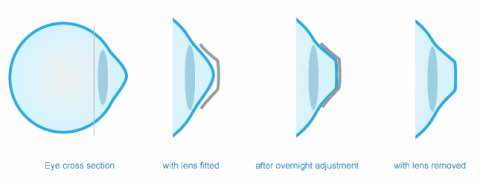
The American Academy of Ophthalmology provides a printable vision test.
You may print the test and put it on the wall which 10 feet away from where you stand. Then cover one of the eyes and read the letters on the chart. At some point, the items will become hard to see. The line at which you can see most of figures correctly represents your visual acuity. There are small numbers off to the side of the chart corresponding to acuity, such as 20/20 or 20/40.
A score of 20/20 is considered optimal, as a healthy person can see things clearly standing 20 feet away. Hence, a bottom number higher than 20 indicates myopia.
printable at-home eye test : https://www.aao.org/eye-health/tips-prevention/home-eye-test-children-adults
- 20-20-20 rule: Every 20 minutes, take a 20-second break and focus your eyes on something at least 20 feet away. This can help reduce vision fatigue.
- Change your focus: Challenge your focus by holding a finger a few inches from your eye, focusing on your finger, and then slowly moving it away while remaining focused. Now look into the distance. Return your focus to your finger as you move it back toward your eye. Repeat again, and do it on both sides.
- Figure 8: While sitting, pick an area on the floor and trace a figure 8 with your eyes. Do this for 30 seconds, then switch directions.
- Scan the room: This relaxing exercise can also promote mindfulness. Sit in a comfortable corner, and scan the room. Focus on each object you find, and visualize objects that are both near and far.
Reference: https://www.webmd.com/connect-to-care/lasik/do-eye-exercises-for-nearsightedness-work
You have come to the right website. There are a number of different reasons why shortsightedness becomes worse. The type of treatment will vary depending on what is causing this to happen. But the good news is that we can help.

